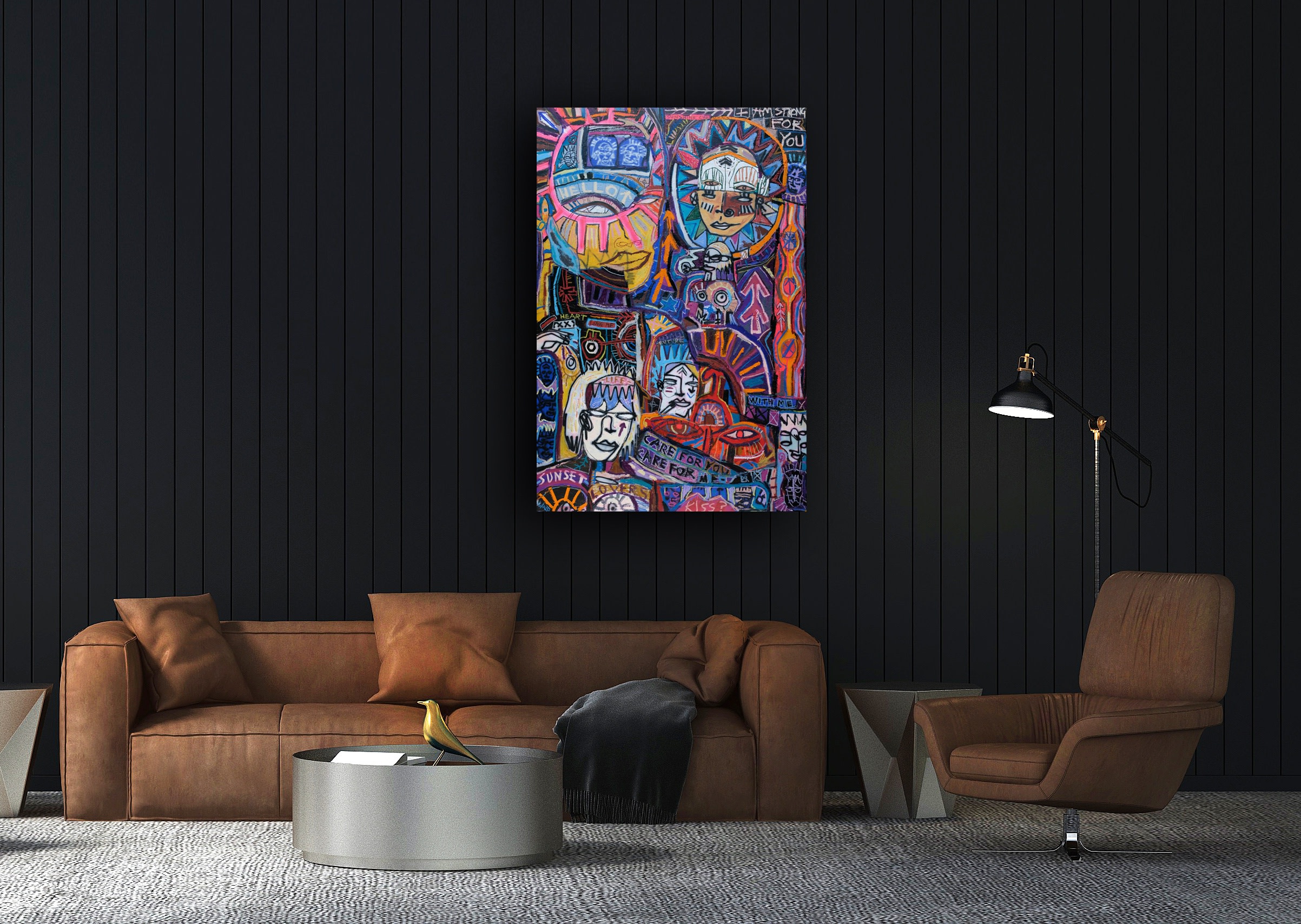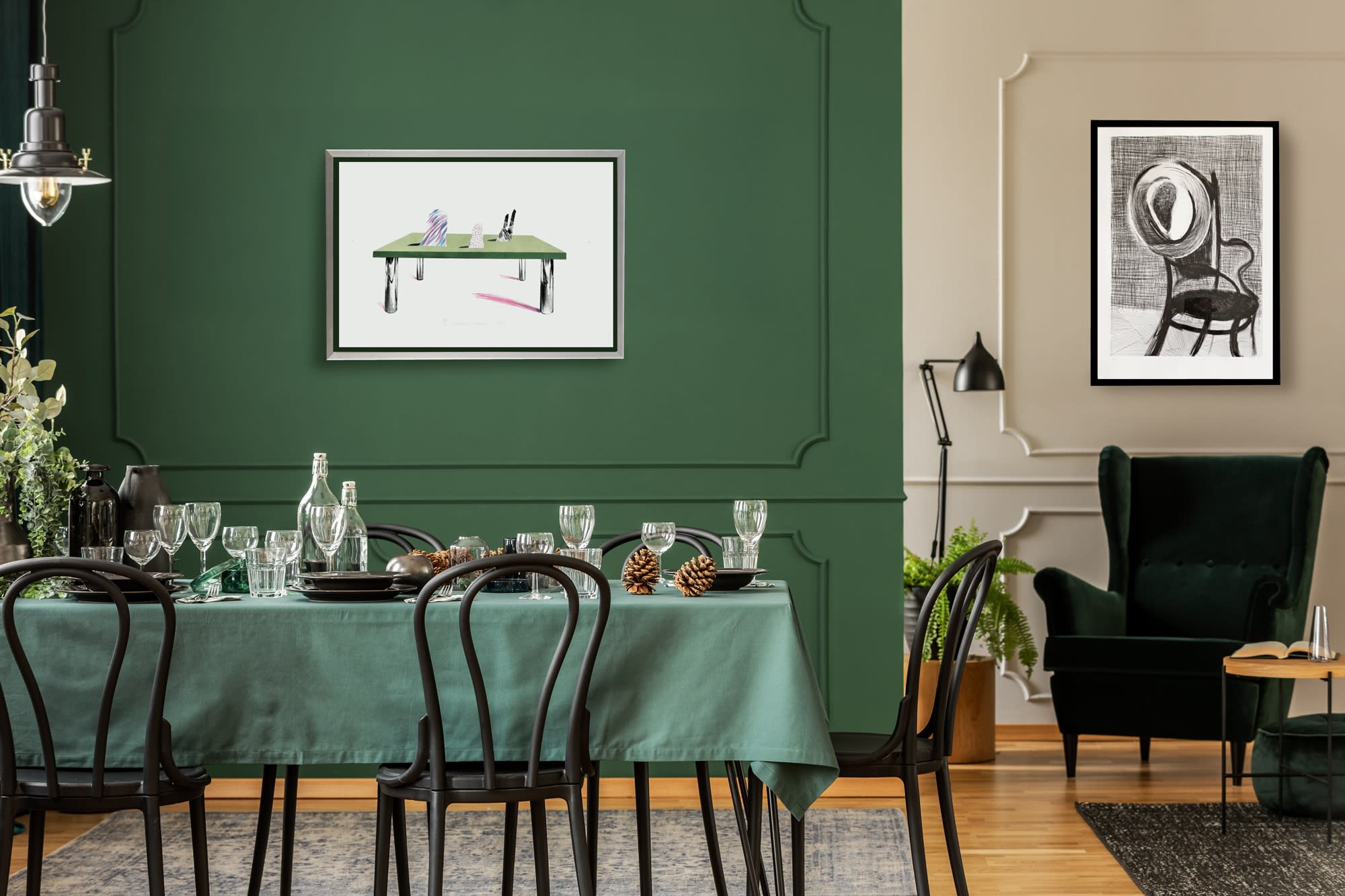Why buy artwork as an investment?
In recent years, we have seen that artwork has outperformed other luxury asset classes such as diamonds, watches, and fine wine. On average, over a 10-year period, art has increased in value by 54%.* In 2023, the wealth of ultra-high-net-worth individuals associated with artworks was around $2 trillion, and this is predicted to grow to $2.8 trillion by 2026.* So why not jump on the bandwagon? While investing in artwork can be good for your asset portfolio, it also offers many other enjoyable elements, such as owning a rare masterpiece you love, which can be passed down to future generations. If you can tick all of these boxes when choosing artwork, then you're winning!

But what makes a piece of art investment-worthy? How do you know it's worth your time and money?
These are common questions we get asked in the gallery, and the truth is, there is no one definitive answer. However, like most investments, there are key steps you can take to make an informed decision.
Firstly, you need to think about what it is you're looking for.
What do you enjoy about art? Do you like the way an artwork looks aesthetically, or do you appreciate the story behind it, perhaps something with social and historical context? Do you want a piece of art from a specific genre ie. pop art or abstract art? Are you looking for an original artwork or a limited edition? What is your budget for investing in artwork? These are questions only you can answer.
Secondly, do your research.
Look the artist up online: How well known are they? What price points do their artworks command? Are they living? Are they a blue-chip artist, or are they an emerging artist? These factors directly affect the value of the artwork. You can judge this by looking at historic sales data and using that information to track the artist’s growth. It’s also important to identify key motifs and images that the artist is best known for, as works representing these elements are likely to be more sought after, which in turn drives demand and increases value. By gathering this information, you can assess the artist's trajectory and decide if you want to acquire a piece by them. Emerging artists may not have extensive historical data, but they could present a promising opportunity if you truly believe in their potential. In 2024, the contemporary art market continued to expand, with its share of total sales increasing from 31% in 2021 to 38% by the end of last year. Young contemporary art also grew, rising from 10% to 13% during this period. Additionally, female artists gained significant attention, with their share of post-war art sales rising to 33%, while accounting for 56% of all young contemporary art sales.*
Feeling overwhelmed or questioning if you have time to do all this research?
Well, good news - we’ve got you covered. As Art Consultants, it’s our job to do the heavy lifting for you and conduct art market research so we can present you with the facts and help you understand the art market. This will assist you in making an informed decision. However, it's important to note that the final decision should always be yours. We are not here to predict the future for you, but we can answer your complex questions and provide you with the factual background information you need.

In the meantime, here are some top tips to consider while you start thinking about it…
As a general rule of thumb, if you can, try to buy original works of art over limited editions, as historically, original works have shown a larger increase in value over time. Limited editions, on the other hand, tend to hold value and increase at a slower rate*. However, if you're fortunate enough to stumble upon the next Banksy, acquiring an authentic limited edition could be a profitable exercise. Similarly, owning limited edition artworks by blue-chip artists like David Hockney, Andy Warhol, and Roy Lichtenstein offers an accessible entry point into the 20th-century investment market and provides an affordable way to own pieces by highly collectible artists, demand for these works on the secondary market has grown over the years.
When investing in 20th-century art, authenticity is key. As it is likely a secondary market artwork, it’s important to buy from a reputable dealer/gallery and ensure the piece has a solid provenance and, ideally, inclusion in a catalog raisonné. A clear and well documented history adds credibility and value. Condition is equally important, damage or poor restoration can significantly affect both the aesthetic appeal and market value. A piece with strong authenticity and in excellent condition is the most desirable. Similarly when acquiring artworks on the primary market, it's ideal to work with galleries who directly represent the artist and can provide a certificate of authenticity for the work as when it comes to eventually selling the artwork, be it years or generations from now, this will be needed to prove its legitimacy.
The art market is considered a low-volatility market, meaning it is a sector investors tend to turn to, as it remains relatively stable through turbulent economic periods. However, the rate of return is generally slower compared to other markets.* Therefore, you should aim to hold onto your artwork for a substantial period to reap the rewards. This is also because an artist's desirability and pricing can change over the course of their career and again after they stop producing works, making their pieces much rarer. Famously, L.S. Lowry was underappreciated during his lifetime, but he is now one of the most important British 20th-century artists, with recent original works selling for over £7 million. Therefore, if you expect an immediate return on your investment after owning a piece for just two years, this may not be the case. Be patient, wait for the right moment, and keep an eye on the market (or let us do that for you)!
Thirdly and most importantly, ensure you love the piece.
Treat the increase in value as a bonus to owning artwork that brings you happiness, tells a story and is a direct reflection of who you are.
Sources:
8th Deloitte Private and ArtTactic Art & Finance Report
Knight Frank - The global perspective on prime property and investmentKnight frank wealth report 2025 *
Sensitivity of the Art market to price volatility
The Art Basel and UBS Survey of Global Collecting 2024 by Arts Economics
Disclaimer
Investing in art carries inherent risks. Values can rise or fall, and past performance should never be taken as a guarantee of future results. Liquidity cannot be assured, and fees, terms and conditions may apply. We strongly recommend seeking independent financial or professional advice before making any purchase.Amber Galleries is not regulated by the Financial Conduct Authority and is not authorised to provide investment advice, whether for regulated or unregulated assets. The content provided in this document is for general informational purposes only and should not be relied upon as the sole basis for any investment decision.While Amber Galleries, including its affiliates, officers, directors and employees, endeavours to ensure the accuracy and completeness of the information provided, it makes no representation or warranty of any kind and accepts no liability for any errors, omissions or inaccuracies. All decisions made based on this information are taken at the buyer’s own risk.



